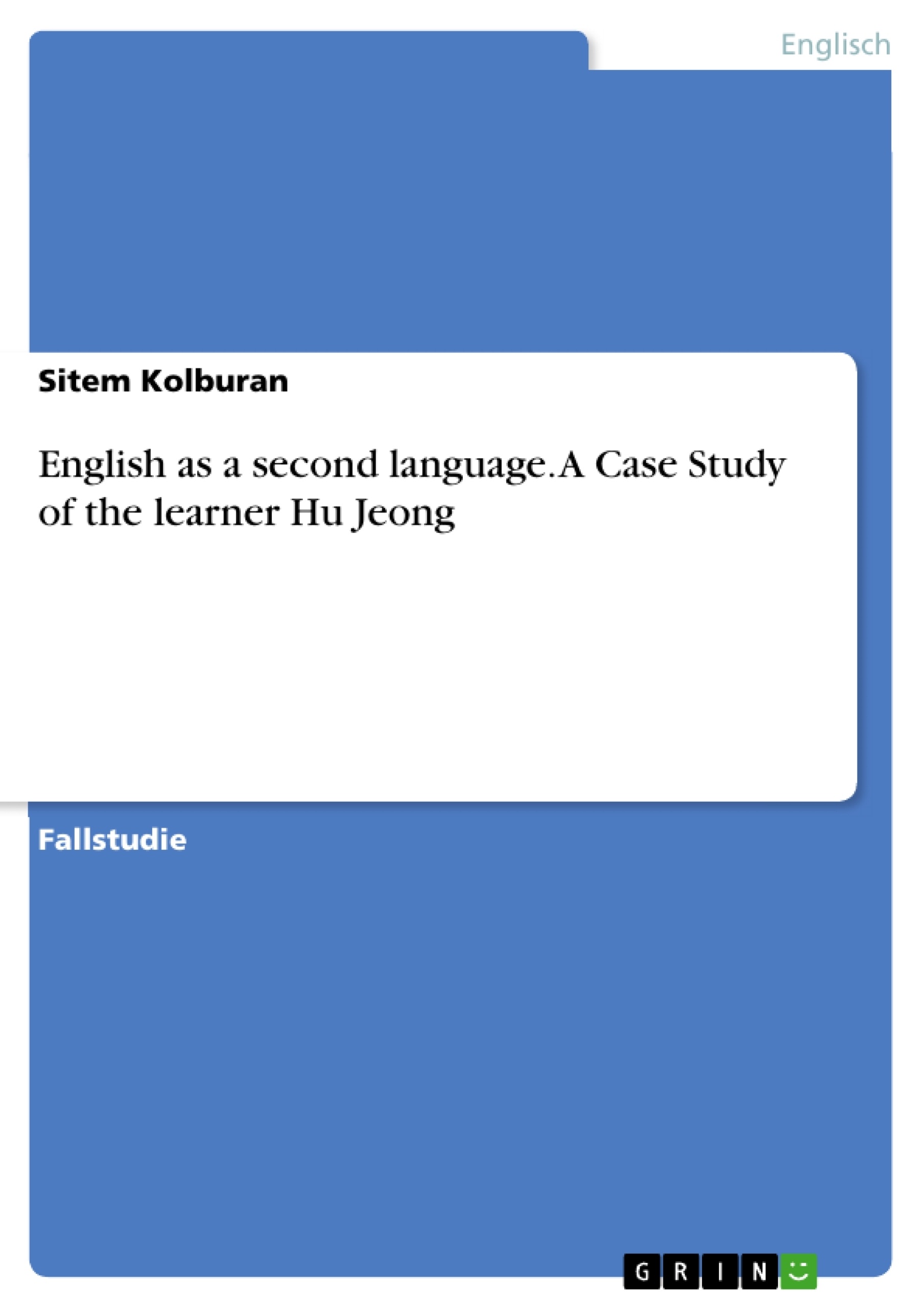This case study analyzes the language errors of the Korean English as a second language learner Hu Jeong, who is currently attending the California State University of Long Beach as part of an exchange program.
The case study and the analysis of Hu’s errors are based on his conversation with two students who speak English on a native-like level. For this purpose, it will be analyzed if Hu’s speech errors are due to a negative L1 transfer. To come to a conclusion, his phonological and morpho-syntactic knowledge will be analyzed.
Inhaltsverzeichnis
- Introduction
- The Subject
- Method
- Results and Discussion
- Pronunciation
- Vocabulary Recognition, Morphology and Syntactic Structures
- Communicative Performance
- Conclusion
Zielsetzung und Themenschwerpunkte
Diese Fallstudie analysiert die Sprachfehler des koreanischen ESL-Lerners Hu Jeong, der derzeit im Rahmen eines Austauschprogramms die California State University of Long Beach besucht. Die Fallstudie und die Analyse von Hus Fehlern basieren auf seiner Konversation mit zwei Studenten, die Englisch auf muttersprachlichem Niveau sprechen. Ziel der Studie ist es zu untersuchen, ob Hus Sprachfehler auf einen negativen L1-Transfer zurückzuführen sind. Zu diesem Zweck werden seine phonologischen und morpho-syntaktischen Kenntnisse analysiert.
- Analyse von Sprachfehlern bei einem koreanischen ESL-Lernenden
- Untersuchung des Einflusses der Muttersprache (L1) auf den Erwerb der Zweitsprache (L2)
- Analyse der phonologischen und morpho-syntaktischen Fähigkeiten des Lernenden
- Beurteilung der Rolle des L1-Transfers bei der Entstehung von Sprachfehlern
- Bewertung des Sprachlernfortschritts des Lernenden
Zusammenfassung der Kapitel
Die Einleitung stellt den Kontext der Fallstudie vor und erläutert die Bedeutung der Analyse von Sprachfehlern bei ESL-Lernenden. Es wird der Zusammenhang zwischen L1-Interferenz und Sprachfehlern beleuchtet und die Zielsetzung der Untersuchung dargelegt.
Der Abschnitt "The Subject" beschreibt den Hintergrund und die Sprachkenntnisse des Probanden Hu Jeong. Es werden Informationen über seinen L1, seinen L2-Lernprozess und seine Erfahrungen im Sprachlernprozess bereitgestellt.
Die Methode beschreibt die Vorgehensweise der Fallstudie, einschließlich der Datenerhebung und -analyse. Es werden die verwendeten Methoden der Sprachdatenerhebung und die Analyse der Sprachfehler vorgestellt.
Der Abschnitt "Results and Discussion" präsentiert die Ergebnisse der Sprachfehleranalyse, wobei die Schwerpunkte auf den Bereichen Aussprache, Vokabelkenntnis, Morphologie, Syntax und kommunikativer Leistung liegen.
Schlüsselwörter
ESL-Lernende, Sprachfehler, L1-Interferenz, L1-Transfer, Phonologie, Morphologie, Syntax, Vokabelkenntnis, Kommunikative Kompetenz, Fallstudie, Sprachentwicklung.
- Arbeit zitieren
- Sitem Kolburan (Autor:in), 2015, English as a second language. A Case Study of the learner Hu Jeong, München, GRIN Verlag, https://www.grin.com/document/335582



